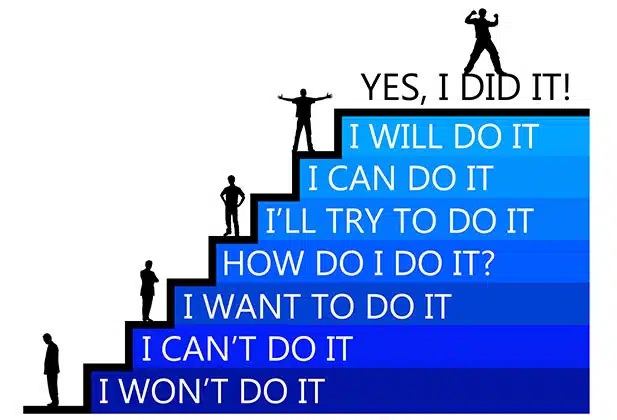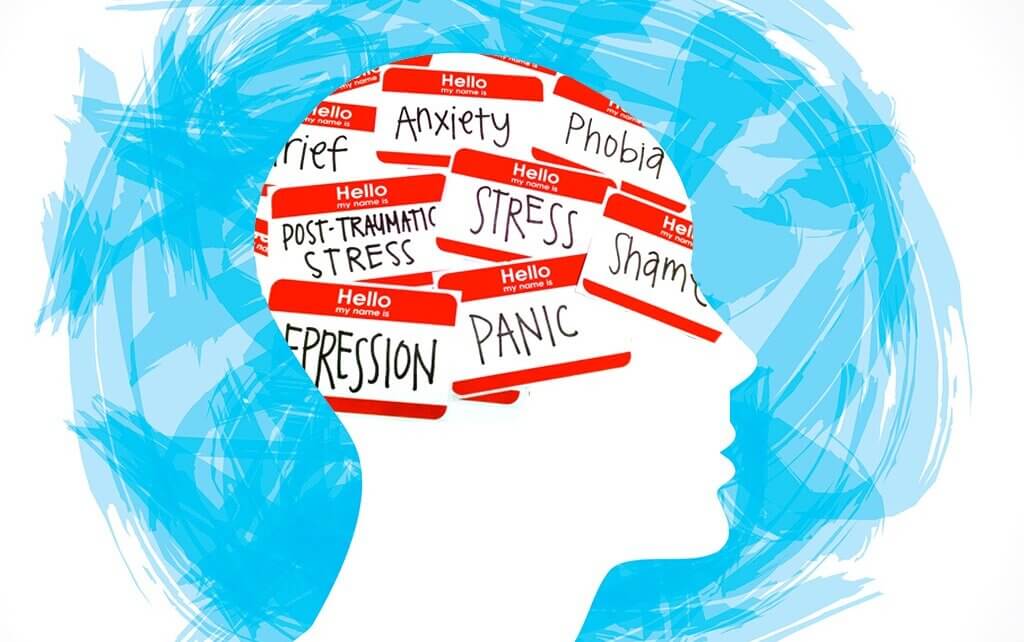Key Takeaways
- Reframing negative thoughts can significantly improve self-esteem and mental wellbeing.
- Common triggers for negative thinking include stress, past experiences, and societal pressures.
- Practicing self-compassion involves being kind to yourself and recognizing your own humanity.
- Identifying and challenging negative thoughts helps to change harmful thinking patterns.
- Focusing on gratitude and positivity can shift your mindset towards a more positive outlook.

“Self Esteem – Mosaic Tree Counseling” from mosaictreecounseling.com and used with no modifications.
How to Reframe Negative Thoughts for Better Self-Esteem
Reframing negative thoughts is a powerful tool for improving self-esteem and mental wellbeing. By altering the way we perceive and react to our internal dialogue, we can transform our mindset from one that is self-critical to one that is supportive and encouraging. This transformation doesn’t just happen overnight, but with consistent practice, it can lead to profound changes in how we view ourselves and the world around us.
Importance of Reframing Negative Thoughts
Reframing negative thoughts is crucial because our thoughts directly influence our feelings and behaviors. When we constantly engage in negative self-talk, it can lead to a cycle of self-doubt and low self-esteem. This cycle can be difficult to break, but reframing offers a way out. It involves recognizing negative thoughts and deliberately changing them to be more positive or realistic.
“Reframing is actually a very effective technique used in therapy that can help address your self-hatred and negative thoughts. It works by shifting how you think to even a slightly different perspective.”
This shift in perspective can help us see situations more clearly and respond to challenges with resilience rather than defeat.
Impact on Self-Esteem and Mental Wellbeing
When we successfully reframe negative thoughts, we can experience an increase in self-esteem and a more stable sense of mental wellbeing. This is because we are no longer allowing negative self-perceptions to dominate our thinking. Instead, we are actively choosing to focus on our strengths and potential. This doesn’t mean ignoring our weaknesses or challenges but rather approaching them with a balanced and compassionate mindset. For more insights, explore optimism techniques that can further enhance your mental wellbeing.
Understanding Negative Thoughts
Before we can effectively reframe our negative thoughts, it’s essential to understand where they come from and how they affect us. Negative thoughts often arise from past experiences, stress, and societal pressures. They can be triggered by various factors and can quickly spiral if not addressed.
Common Triggers of Negative Thinking
Several factors can trigger negative thinking. Stress is a major contributor, as it can cloud our judgment and make us more prone to seeing situations in a negative light. Past experiences, especially those involving failure or criticism, can also linger in our minds and fuel negative self-talk. Additionally, societal pressures and unrealistic expectations can lead us to doubt our abilities and worth.
By identifying these triggers, we can begin to take steps to address them. For example, if stress is a significant trigger, we might focus on stress management techniques. If past experiences are the issue, therapy or journaling might help us process and move past them.
Effects of Negative Thoughts on Daily Life
Negative thoughts can have a profound impact on our daily lives. They can affect our mood, relationships, and even our physical health. When we constantly engage in negative thinking, we might find ourselves feeling anxious, depressed, or unmotivated. Our relationships can suffer as well, as we may become more withdrawn or critical of others.
Most importantly, negative thoughts can limit our potential. When we believe we can’t succeed or aren’t worthy, we’re less likely to take risks or pursue opportunities. By reframing these thoughts, we open ourselves up to new possibilities and a more fulfilling life.

“Self-Compassion by Kristin Neff: Join …” from self-compassion.org and used with no modifications.
Tip #1: Practice Self-Compassion
One of the most effective ways to reframe negative thoughts is through self-compassion. Self-compassion involves treating yourself with the same kindness and understanding that you would offer a friend. It’s about recognizing that everyone makes mistakes and that these mistakes don’t define your worth.
Definition and Benefits of Self-Compassion
Self-compassion is the practice of being kind and understanding toward yourself, especially in times of failure or difficulty. It involves acknowledging your pain without judgment and recognizing that everyone experiences challenges. By practicing self-compassion, you can reduce feelings of shame and inadequacy and foster a healthier self-image.
Research has shown that self-compassion is linked to greater emotional resilience, lower levels of anxiety and depression, and overall wellbeing. It helps us navigate life’s challenges with grace and understanding, rather than self-criticism.
Steps to Cultivate Self-Compassion
Here are some steps to cultivate self-compassion in your daily life:
- Practice mindfulness: Be aware of your thoughts and feelings without judgment. Notice when you’re being self-critical and gently redirect your thoughts.
- Be kind to yourself: Treat yourself with the same kindness you would offer a friend. Offer words of encouragement and understanding.
- Recognize common humanity: Understand that everyone makes mistakes and experiences challenges. You’re not alone in your struggles.
- Write a self-compassion letter: Write a letter to yourself from the perspective of a compassionate friend. Offer understanding and encouragement.
By incorporating these practices into your life, you can begin to shift your mindset from one of self-criticism to one of self-compassion. This shift is a crucial step in reframing negative thoughts and improving your overall wellbeing.

“How to Challenge Negative Thoughts …” from embracemindfulness.org and used with no modifications.
Tip #2: Identify and Challenge Negative Thoughts
Identifying and challenging negative thoughts is a critical step in changing how we perceive ourselves and the world. By becoming aware of these thoughts, we can begin to question their validity and impact. This process helps break the cycle of negativity and fosters a more balanced perspective. For more on developing a balanced mindset, explore these adaptability tips.
Recognizing Negative Thought Patterns
To effectively challenge negative thoughts, you must first recognize them. Negative thought patterns often manifest as automatic thoughts that occur in response to specific triggers. These thoughts can be repetitive and may include themes of self-doubt, fear, or inadequacy.
“Negative thoughts often arise from past experiences, stress, and societal pressures. They can quickly spiral if not addressed.”
Recognizing these patterns involves paying attention to your internal dialogue. Notice when you feel anxious or upset and ask yourself what thoughts preceded these emotions. Keeping a thought journal can be a helpful tool in this process. Write down your thoughts and examine them objectively to identify recurring themes. Understanding the types of expectations you hold can also provide insights into these recurring patterns.
For example, if you frequently think, “I’m not good enough,” note this pattern and consider the situations that trigger it. Understanding these patterns is the first step toward challenging them.
Techniques to Challenge and Change These Thoughts
Once you’ve identified negative thought patterns, the next step is to challenge and change them. This involves questioning the accuracy and usefulness of these thoughts and replacing them with more balanced perspectives. Here are some techniques to help you do this:
- Question the evidence: Ask yourself if there is concrete evidence to support your negative thoughts. Often, these thoughts are based on assumptions rather than facts.
- Consider alternative perspectives: Try to see the situation from a different angle. What would you say to a friend who had the same thought?
- Use positive affirmations: Replace negative thoughts with positive affirmations that reinforce your strengths and potential.
- Practice cognitive restructuring: Challenge irrational thoughts by identifying cognitive distortions, such as black-and-white thinking or catastrophizing, and reframing them in a more realistic light.
By consistently applying these techniques, you can gradually change your thought patterns and develop a healthier, more positive mindset. For more ways to combat self-loathing, consider reading this article on Talkspace.

“Manage Depression With Gratitude and …” from cf.healthyplace.com and used with no modifications.
Tip #3: Focus on Gratitude and Positivity
Focusing on gratitude and positivity is another powerful strategy for reframing negative thoughts. By shifting your attention to the positive aspects of your life, you can cultivate a more optimistic outlook and reduce the impact of negativity. For more strategies, explore ways to combat self-loathing.
Gratitude involves appreciating the good things in your life, no matter how small. It encourages you to focus on what you have rather than what you lack. This shift in focus can have a profound impact on your overall happiness and wellbeing.
Positivity, on the other hand, involves consciously choosing to focus on positive thoughts and experiences. It means looking for the silver lining in difficult situations and maintaining a hopeful attitude.
- Keep a gratitude journal: Write down three things you’re grateful for each day. This practice helps reinforce positive thinking and gratitude.
- Surround yourself with positivity: Spend time with positive people, consume uplifting content, and engage in activities that bring you joy.
- Practice mindfulness: Stay present and appreciate the moment. Mindfulness can help you become more aware of positive experiences and reduce the focus on negativity.
- Celebrate small wins: Acknowledge and celebrate your achievements, no matter how small. This reinforces a positive mindset and boosts self-esteem.
The Role of Gratitude in Reframing Thoughts
Gratitude plays a crucial role in reframing thoughts because it encourages a shift in perspective. When you focus on what you’re grateful for, you naturally begin to see the positive aspects of your life. This shift can help counterbalance negative thoughts and promote a more optimistic outlook.
Research has shown that gratitude is linked to increased happiness, better physical health, and stronger relationships. By cultivating gratitude, you can enhance your overall wellbeing and reduce the impact of negative thinking.
Daily Practices to Foster Positive Thinking
Incorporating daily practices that foster positive thinking can help reinforce a positive mindset and reduce the impact of negative thoughts. Here are some practices to consider:
- Start your day with positive affirmations: Begin each day by affirming positive beliefs about yourself and your capabilities.
- Limit exposure to negativity: Be mindful of the media you consume and the people you interact with. Surround yourself with positivity.
- Practice self-care: Engage in activities that nurture your physical, emotional, and mental wellbeing. This can include exercise, meditation, or hobbies you enjoy.
By integrating these practices into your daily routine, you can cultivate a positive mindset and build resilience against negative thoughts.

“spread awareness about mental health …” from outlook.monmouth.edu and used with no modifications.
Tip #4: Seek Professional Help if Needed
While self-help techniques can be effective in reframing negative thoughts, there are times when professional help may be necessary. Seeking support from a therapist or counselor can provide additional guidance and tools to address deeper issues and facilitate lasting change.
When to Consider Therapy or Counseling
Consider seeking professional help if you find that negative thoughts are significantly impacting your daily life, relationships, or mental health. Therapy can be particularly beneficial if you’re experiencing symptoms of anxiety, depression, or other mental health conditions.
Therapists can help you explore the root causes of negative thinking and provide strategies to address them. They can also offer a safe and supportive environment to work through difficult emotions and experiences, such as enmeshment in families.
How Professional Support Can Aid in Thought Reframing
Professional support can be instrumental in the process of thought reframing. Therapists often use evidence-based techniques, such as cognitive-behavioral therapy (CBT), to help clients identify and change negative thought patterns. CBT focuses on challenging distorted thoughts and beliefs and replacing them with more realistic and positive ones.
Therapists can also teach mindfulness and relaxation techniques to help manage stress and improve emotional regulation. With the guidance of a professional, you can develop a personalized plan to address your unique needs and goals.
Ultimately, seeking professional help is a proactive step toward improving your mental health and wellbeing. It demonstrates a commitment to personal growth and a willingness to invest in yourself. To further enhance your personal development, consider exploring adaptability tips to cultivate an adaptable mindset.
Cultivating a Positive Mindset
Cultivating a positive mindset is an ongoing journey that involves continuous effort and practice. It’s about creating habits that support positive thinking and emotional resilience. By consistently applying the techniques discussed, you can foster a mindset that embraces challenges and celebrates successes.
“Becoming more mindful about your thoughts, and then making a conscious choice about how you’ll react to them —whether you ignore them, acknowledge them, or simply breathe through them — is an excellent way to combat negative thoughts and negative self-talk.”
This conscious choice to focus on positivity can transform how you experience life. It’s about shifting your focus from what you lack to what you have and can achieve. For more strategies, check out ways to combat self-loathing.
Integrating Tips into Daily Life
Integrating these tips into your daily routine can be as simple as setting aside time each day for reflection and gratitude. Start by journaling about what you’re grateful for or practicing mindfulness meditation. Engage in activities that bring you joy and surround yourself with positive influences.
Additionally, regularly review and challenge any negative thoughts that arise. Use positive affirmations and self-compassion exercises to reinforce a positive self-image. Remember, consistency is key. Small, daily actions can lead to significant changes over time. For more strategies, check out ways to combat self-loathing.
Long-term Benefits of a Positive Mindset
The long-term benefits of cultivating a positive mindset are profound. Individuals who maintain a positive outlook tend to experience better mental health, stronger relationships, and greater life satisfaction. They are more resilient in the face of adversity and are better equipped to handle stress. Learn how to develop an adaptable mindset to further enhance these benefits.
Furthermore, a positive mindset can enhance creativity and problem-solving skills, as it encourages open-mindedness and flexibility. By investing in your mental wellbeing today, you set the foundation for a more fulfilling and successful future. Discover some effective optimism techniques to help you on this journey.

“Positive Mindset …” from positiveroutines.com and used with no modifications.
Frequently Asked Questions (FAQ)
Below are some common questions about reframing negative thoughts and cultivating a positive mindset.
How long does it take to reframe negative thoughts?
The time it takes to reframe negative thoughts varies for each individual. Some people may notice changes within a few weeks, while others may take several months. The key is consistent practice and patience. Remember, changing deeply ingrained thought patterns takes time, but the effort is worth it.
Can reframing thoughts improve mental health?
Yes, reframing thoughts can significantly improve mental health. By reducing negative self-talk and promoting positive thinking, individuals often experience reduced anxiety, depression, and stress. This improvement in mental health can lead to better overall wellbeing and a more fulfilling life.
Is professional help necessary for everyone?
Professional help is not necessary for everyone, but it can be beneficial for those struggling to manage negative thoughts on their own. Therapists can provide additional tools and support to facilitate thought reframing and address underlying issues. It’s a personal decision and depends on individual needs and circumstances.
“Therapists explain exactly how to do that. Becoming more mindful about your thoughts, and then making a conscious choice about how you’ll react to them —whether you ignore them, acknowledge them, or simply breathe through them — is an excellent way to combat negative thoughts and negative self-talk.”
What are the signs of successful thought reframing?
- Increased self-esteem and confidence.
- Improved mood and reduced anxiety or depression.
- Greater emotional resilience and ability to handle stress.
- More positive and optimistic outlook on life.
- Stronger relationships and better communication with others.
These signs indicate that the effort to reframe negative thoughts is paying off and that a more positive mindset is taking root.
Can children benefit from these reframing techniques?
Absolutely, children can benefit from reframing techniques. Teaching children to recognize and challenge negative thoughts early on can help them develop resilience and a positive self-image. Activities such as gratitude journaling and positive affirmations can be adapted for younger audiences to make them engaging and accessible.
Parents and educators can play a crucial role in guiding children through this process, offering support and encouragement as they learn to navigate their thoughts and emotions. By instilling these skills early, children are better equipped to face life’s challenges with confidence and optimism.










Leave a Reply